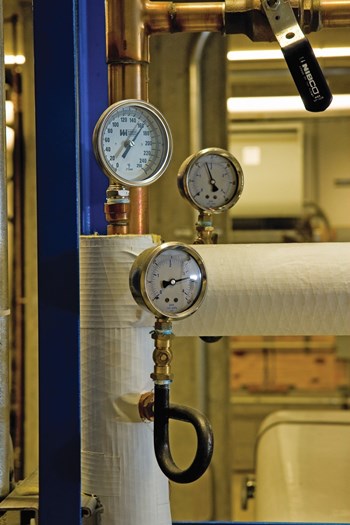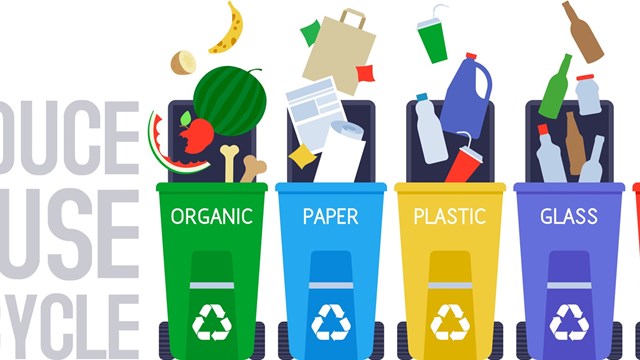
As Kermit the Frog once sang, it’s not easy being green. In many cases, going, “green” for condominium units (which can encompass a wide range of practices) comes with paperwork, additional maintenance, and, least appealingly, increased cost.
And, as developers and real estate agents across New England will tell you, it’s still very difficult to assign a commercial value to green options. So you might think that green construction is limited to fancy new homes and Prius owners.
However, new environmentally-friendly technologies are being increasingly developed for use in multi-family buildings, contractors and developers are adopting green best practices, and firms advising on green construction and remodeling are spreading across New England.
Why? Because these technologies and practices are economically-sound, provide significant health benefits, and will help mitigate some of the adverse changes brought about by construction and development.
And there are many options available that go beyond the obvious swapping out of light bulbs in the common area. In addition, advisory and financial resources are available to help make the retrofits easier on the budget and the manager.
Low-Hanging Fruit
When considering opportunities to “go green,” the first step is to do an assessment. Keith Moore, vice president and director of construction for Northland Residential, a Burlington, Massachusetts development firm, noted, "It's important to understand how people use the house before you can help." What do the residents see as the problems? What would the board or manager like to improve? Those answers can point to places to look first for the “low hanging fruit” – those easy-to-implement changes that yield quick results.
One type of assessment is an energy audit, often offered for free by energy companies like NStar. Skilled technicians come to the building, perform a series of tests, and then provide detailed instructions on using energy more efficiently. In addition, companies like NStar and National Grid offer a myriad of programs and options for saving money. National Grid's offshoot website (www.thinksmartthinkgreen.com) offers information on inspections and rebates for appliances, lighting, and insulation.
More extensive analyses of residential buildings are also available through non-utility companies specializing in performing energy audits, and can help associations develop a “laundry list” of potential savings.
Short- and Long-Term Benefits
While many small projects can pay for themselves in energy savings in about two years, most major retrofits can be expected to pay for themselves in seven years. That is hardly any time in the overall life of a building, but way beyond the tenure of most board members.
So understanding both the short- and long-term benefits is important – particularly because, as Bob Burns of Burns Associates, an engineering firm in Portsmouth, New Hampshire, points out, “the association owns the shell of the building, but the savings often go directly to the owner.”
Another obstacle facing associations may have nothing to do at all with desire or finances. As Moore explains, “the greenest products are not always available.” As demand increases, product availability will of course increase as well, but at this moment, it is not always possible to get the exact product you want.
A third challenge, Moore explains, may have to do with perception. Sometimes, it is unclear exactly what is truly environmentally sustainable and what is merely “greenwashing” – products that are labeled with false green claims in an attempt to gain business from consumers who want to be more environmentally-friendly.
For these reasons, some projects may not be immediately appealing to the condo board or manager. As one board member notes, “getting the board educated is step number one. Getting the manager on your side is step number two.” To get a project off the ground education and communication become particularly important, given the costs associated with many retrofits.
Larger Projects
After the easy projects come the more extensive – and expensive – ones. In Moore’s experience, the most common larger projects are things like installing a geothermal well; putting on solar panels; and dealing with wastewater through an on-site wastewater treatment plant, a grey water recycling program, a rain water cistern. More elaborate projects mix and match green elements, like combining solar panels with water treatment.
Another trend that seems to be taking root is the rooftop garden. Roof gardens and green roofs can both reduce the “heat island” effect of many urban buildings and reduce heat loss in the winter. Rooftop gardens that residents can actually visit and enjoy, provide anadditional green space and aesthetic value.
Beyond Green Construction in Easthampton, Massachusetts, has embarked on a project that clearly falls into the “major” category. They recently bought a hundred-year-old two-family home in Easthampton, and stripped it down to 50 percent of its original structure. “We wanted to create a model for how homes can be remodeled,” company owner Sean Jeffords explains, “and now we have groups and field trips coming in from all over to visit the site.”
The building, which is being transformed into a two-unit condo, will boast a zero-energy design. This means that between the solar arrays on the roof, the high-efficiency appliances, and well-sealed building envelope, the condo can potentially create as much energy as it uses.
Other green features being added to the old house are systems for rainwater collection and distribution, a rain garden for filtering water, and gardens for producing food.
And, as Jeffords explains, the greenest factors of this green condo remodel may not be in the house itself: “The house is close to shops and transit lines. We’re hoping to do this house as a model and gradually remodel the whole neighborhood along the ideas of New Urbanism.”
But you don’t have to literally tear apart a building to take advantage of green technologies.
Smooth Switchover
In fact, the installation of a co-generation unit in the Rollins Square condominium in Boston’s South End went so smoothly that residents weren’t even aware of the switch-over. “When the co-generation system went into effect, no one even noticed,” says Marc LaCasse, chairman of the association board. “One day, they flipped the switch and we started making our own juice,” he says of the co-generation unit that produces both heat and electricity.
But, he adds, “they will notice whenwe send our semi-annual report and we can say, ‘Guess what? We’re saving money!’”
How much money? “The projected cost savings is about $75,000 a year, and the life expectancy of the machine is roughly 15 years – so that’s $1.125 million over 15 years in projected energy savings,” he said. When the association board crunched the numbers while researching co-generation systems, he noted, the project “was a no-brainer” and a relatively easy sell to owners at the 184-unit mixed-income community.
“Utility costs were our biggest line item… so we were always looking for ways to cut costs,” LaCasse says. The condominium opened in 2003 and after the board took over from the developer in 2004, it became clear that utility costs consumed 45 to 50 percent of the association budget. Looking for ways to cut costs, “we did wholesale electricity purchase contracts, and did the same with our natural gas contracts,” LaCasse said, but they didn’t make enough of a dent.
“We ultimately purchased a co-generator to do two things: number one, to manufacture our own electricity to supplement our draw down from the grid, to power our common areas… and number two, a byproduct of the electric generation is heat, which is captured in two giant heat exchangers through which cold water runs.” The co-generation unit, “about the size of a Mini-Cooper” vehicle, was installed in the 275-car underground garage. Running on natural gas, the 8-cylinder unit provides electricity for common elements like the elevators and garage lighting.
“We don’t have to buy as much electricity from the grid, especially in the summer months, when the giant chillers to provide air conditioning are on,” LaCasse said. “Our greatest savings will come in the summer when we’re using the greatest amount of electricity and electricity costs spike at peak demand periods, when people are home and it’s hot outside.” A side benefit of the electric generation is the heat that’s produced –which in turn provides hot water for showers, laundry and dishwashing throughout the complex.
$25,000 Saved
During the first five months of its operation, he noted, the new system saved the condominium $25,000.
The cost of the unit, after utility company rebates, was $200,000, which the association funded mostly through a commercial loan. “It will be paid off in 3.3 years,” LaCasse said. “But at the end of the year, when you crunch all the numbers, even with the loan payments, we will see a net savings of money –even in the years we’re paying the loan. After the loan is paid off, that’s when the energy savings really spike. When it’s paid for, that’s when you really start to save money.”
Whatever the method and whatever the project, greening in real life is more than just dressing up aging buildings. It is about saving money and improving the lives of residents. It is about setting good examples and making smart choices.
And last but certainly not least, it is about helping to save the planet. And that's something even Kermit the Frog can sing about.
Robert Todd Felton is a freelance writer and a frequent contributor to New England Condominium magazine.
Pat Gale, associate editor of New England Condominium, also contributed to this article.






Leave a Comment